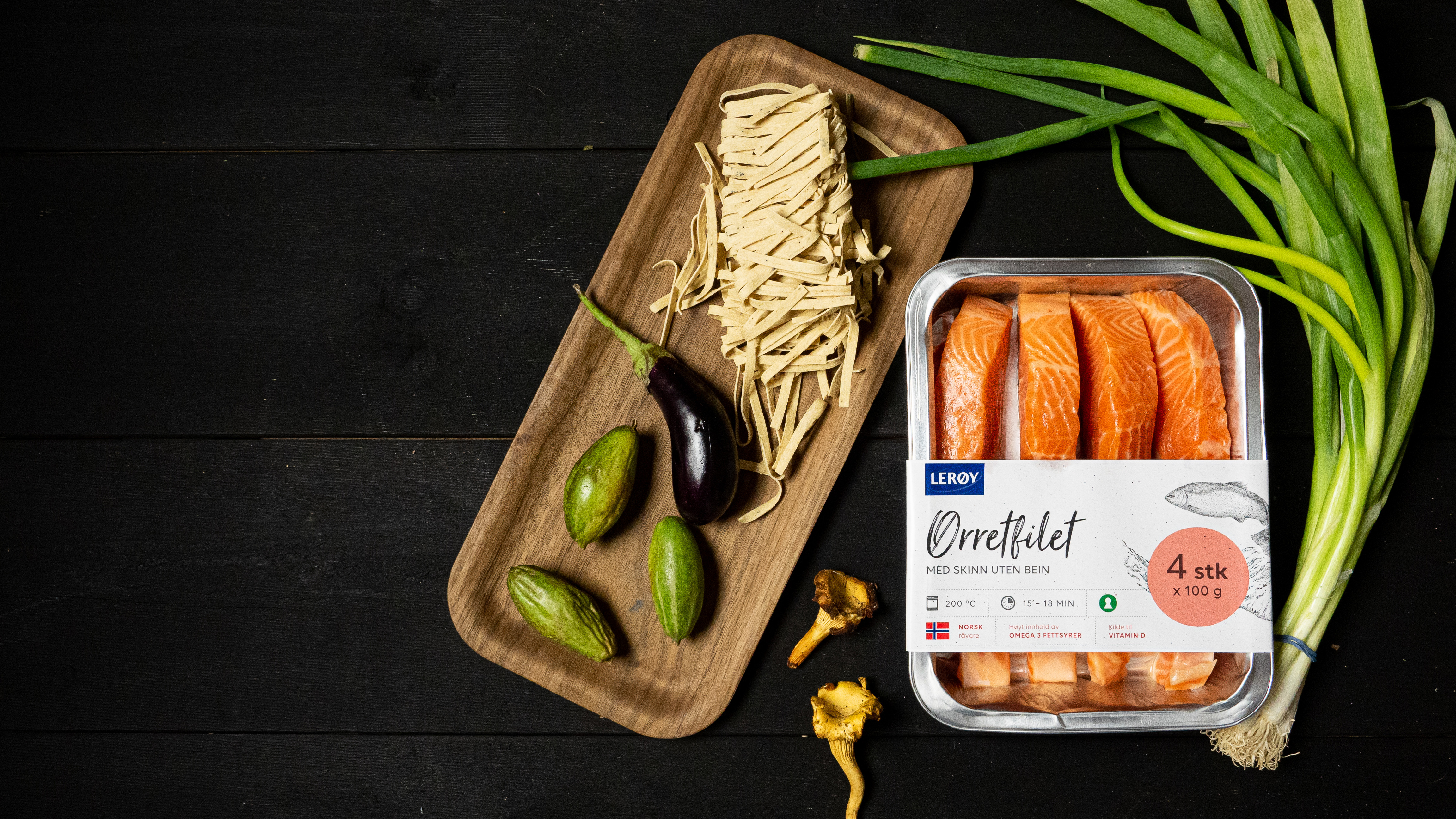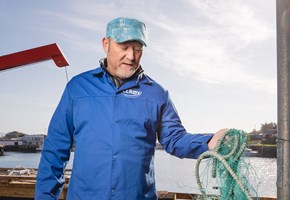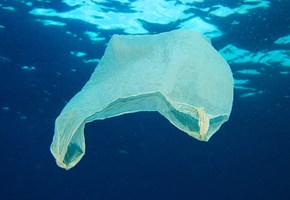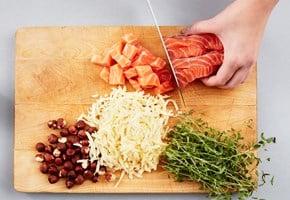Stamsund is located in Vestvågøy municipality in Lofoten. It is a quiet, small village with just over one thousand inhabitants, in a landscape so dramatic that it is not uncommon to have to blast away and remove land just to allow settlement. Everyone in Stamsund knows everybody, for better or for worse.
The fish factory on the quay at J. M. Johansens vei was left untouched since 1979, and it is a well-known fact that settlement and employment in Stamsund have been closely linked to fishing for more than 200 years.
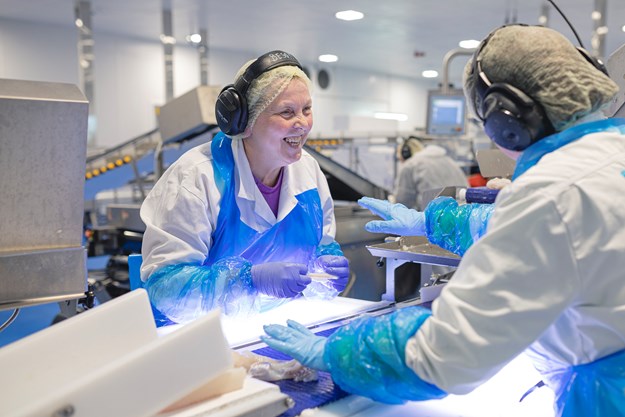
Increasing restrictions on the fishing season in Lofoten have made it difficult to get access to fresh fish all year round, and without fish, there were times of the year when the workers had nothing to do. As the largest and most important employer in this small village outside Leknes, the situation was dire and quite a number of employees had to spend periods of time wondering how they were going to pay their mortgage and car loan. Several employees had to be laid off for months at a time. The factory, which at that time housed Havfisk and Norway Seafoods and was owned by Kjell Inge Røkke and Aker, was purchased by Lerøy in 2016.
This also represented a milestone for Lerøy, as it could call itself a complete supplier of both red and white fish.
Major investment to secure operations
Several projects were introduced to turn around the negative trend. Many months in 2018 were dedicated to the largest reconstruction of the factory to date, building a completely new fish processing department that now produces fish cakes.
“Some people think that factory work can be monotonous, and I suppose in some ways, it is – but actually, no one day is ever the same,” says Factory Manager Steffen Andersen.
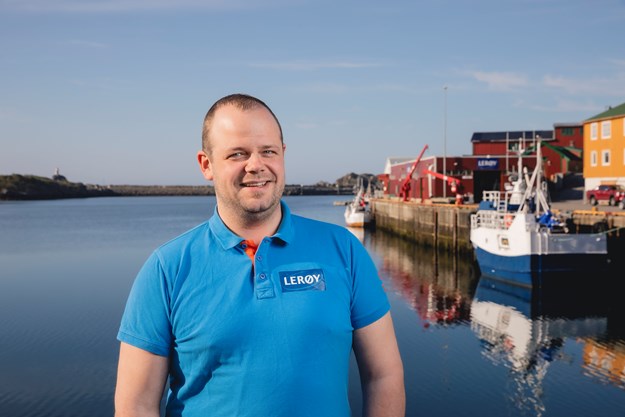
He describes how fishing is an unpredictable business – low pressure can affect the weather, causing sudden and powerful storms. This is just one example of unforeseen events that can affect daily fillet production.
“But we can keep producing fish cakes on days like this, so we have a stable industry that, at times, is controlled by wind and weather,” says Steffen Andersen.
This allows the factory to ensure all-year-round employment for its workers and to keep the most important industry alive in this area.
- The history of fishing in Norway dates back to the Stone Age. The sale of fish as a commodity from North Norway to customers further south emerged in the 11th century.
- Exports of dried cod and herring to England started in the 1100s. The growth of this trade was based on the winter cod in Lofoten and herring fishing in North Norway.
- In 1946, Norway established its own Ministry of Fisheries, the first country in the world to do so.
“We’ve won the lottery”
Inger Elise Karlsen is one of the employee representatives at the factory in Stamsund. She has worked there for 15 years and neither wants nor is planning to change her career:
For Inger Elise, every day is a good day. All she ever wanted and now has is being able to get on her bike, enjoy the landscape and being close to nature and cycling to a safe workplace with a great working environment and colleagues she cares about.
Not everyone would go to work early just to have a cup of coffee and a chat with the other employees before their shift starts at six o’ clock, but she does. Every single day.

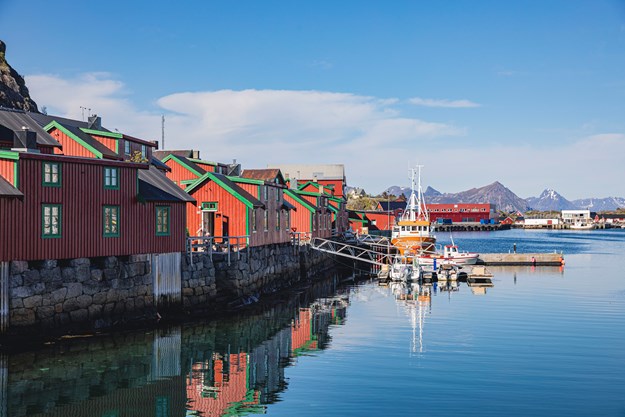
Found a home for himself and his family
While both Steffen Andersen and Inger Elise Karlsen were born and grew up in North Norway, not all the employees at the factory are local. One of these is 28-year-old Dovydas Lidzius. He knew nothing about Stamsund when he packed his car in 2013 and set off on the drive from Lithuania to start his new job at the fish factory.
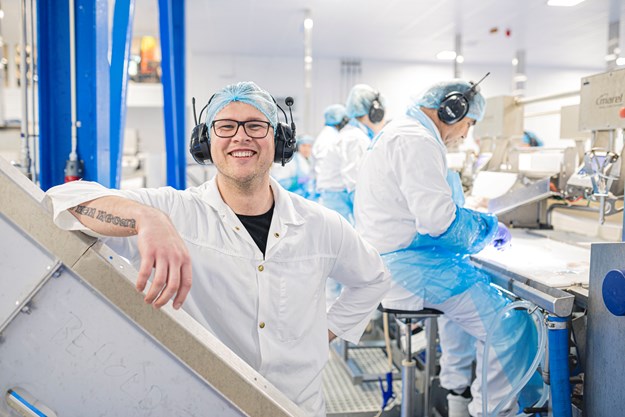
“I’d worked for several years in Sweden, Denmark, Germany and Lithuania for employers who paid us little money and with unreasonable working hours. What’s more, we had no guarantees. I was so ready for a new challenge,” he says, and confirms that he had no idea where Stamsund was before he set off on his journey there.
He learned Norwegian by going to work and talking to his colleagues at the factory. He was also one of the employee representatives up to 2019. He was promoted in 2019 from production worker to assistant supervisor, and now wants to focus 100% on his new position.
For Dovydas, the periods of redundancies were very difficult, particularly after his first child was born. It was hard to live with financial insecurity, even more so on the long, dark winter days.

It was never really a question of closing the factory, but for Dovydas, even the thought of it is inconceivable.
“Stamsund is such a small place. Imagine if one hundred of the inhabitants had to apply for new jobs! It would be very difficult. I’m sure many people would have to move, and that would affect other jobs, like those working in the schools and shops.”
The employees were sceptical when the plans were revealed for the reconstruction and major investments. However, they chose to close ranks and accept the changes optimistically.
“We were kind of unsure what the new factory needed to make it work, but now that the new fish processing department is open and we’ve got started, we feel that we are on the right track,” he says with a smile.
- For many years, the fish factory was run by the descendants of businessman and owner of the fishing station, Julius Marencius Heiberg Johansen, also known as J. M. Johansen. He took over his father's business in Stamsund and built the large quay there.
- In 1996, the white fish factory was purchased by Kjell Inge Røkke and Aker, who ran Havfisk and Norway Seafood up to 2016, when Lerøy came in as new owners.
- The number of inhabitants in Stamsund is 1,092. A total of 100 persons work at the factory and fish landing station in Kleppstad.
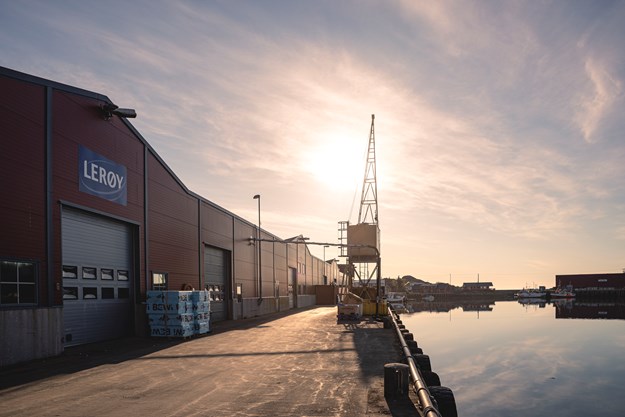
Operations are important for the entire region of Lofoten
“I get up in the middle of the night, set sail and haul in my nets then launch new ones. Then I wait for a few hours and do it all again. That’s how you catch quality fish, and quality is essential in this industry,” says fisherman Per Hugo Ovesen. He delivers his fish to the Lerøy facility.
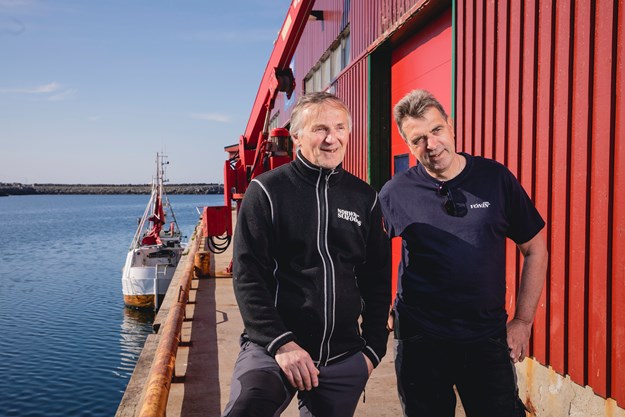
Per Hugo Ovesen does not let the fact that parts of the industry are now automated concern him. He is, in fact, very happy about it:
“This year, I was able to catch my whole quota of 44 tonnes round cod in one month. If we look back 30 years in time, it would have taken four persons to do the same job. It’s been a revolution,” he says happily.
However, the uncertain times at the factory did give him cause for concern.
“It’s one thing that the factory is important for its employees and the local community, but it’s also important for us fishermen in the north. There are several smaller fisheries that send their fish to Stamsund because they can receive small quantities. This allows us to keep fishing all year round. There's no doubt that the factory is important for Lofoten as a region,” says Per Hugo Ovesen.
Raw produce manager Paul Hauan has experienced numerous ups and downs over the 23 years he has worked at the factory. When he was told in 2016 that Lerøy was coming in as new owners, he expected them to arrive with a clear idea and perspective of what they wanted to do there.
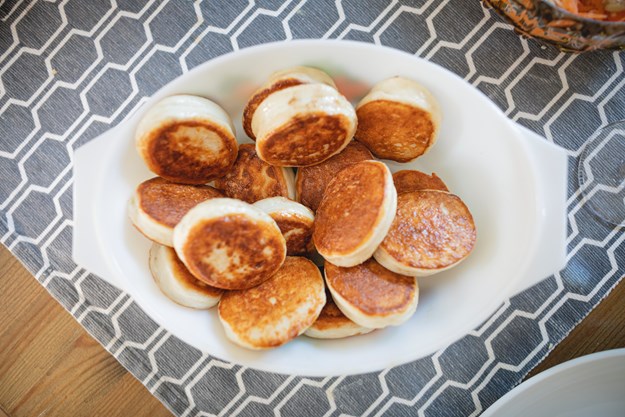
“Personally, I believe that Lerøy are the right people to own the factory. By making such investments and rebuilding, they are sending a signal that they are confident in the facility,” says Paul Hauan, who feels they have an exciting future ahead of them, which has been planned optimally.
“I also feel that you have to be genuinely interested in the industry in order to maintain operations in such a small community as Stamsund. Lerøy could have made that investment anywhere in the world, but they chose to come to Stamsund.”

